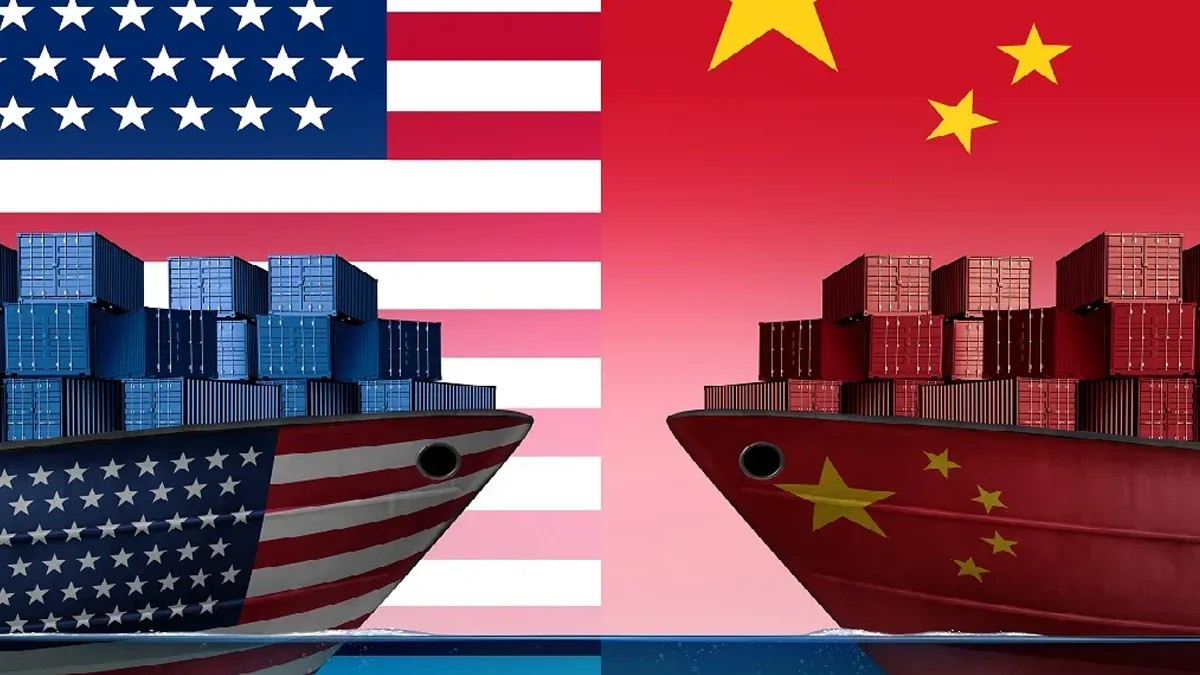Necessary Always Active
Necessary cookies are required to enable the basic features of this site, such as providing secure log-in or adjusting your consent preferences. These cookies do not store any personally identifiable data.
|
||||||
|
||||||
|
||||||
|

China has announced plans to impose a 34% tariff on all imports from the US beginning April 10, CNBC reported. China’s retaliatory tariffs come a day after the US slapped the US with a 54% tariff on April 3.
China criticized the decision by the Trump administration to impose 34% additional levies on China. The second-largest economy in the world termed the decision as ‘inconsistent with international trade rules’.
“The U.S. announced tariff hikes on imports from many countries, including China, under the pretext of reciprocity. This gravely violates World Trade Organization rules, and undermines the rules-based multilateral trading system. China firmly rejects this and will do what is necessary to defend our legitimate rights and interests,” Chinese Foreign Ministry spokesperson Guo Jiakun said.
Commenting on the latest US China trade conflict, Chinese state media, Xinhua said that the decision seriously undermines the interest of the Asian country. It also threatens the stability of global supply chains and the global economic development agenda at risk. In its response, the Chinese government urged the US to reconsider the tariffs and allow for consultations.
“China urges the United States to immediately cancel its unilateral tariff measures and resolve trade differences through consultation in an equal, respectful and mutually beneficial manner,” China’s Finance Ministry said.
The US exports a range of products to the Chinese market. These include soy, machinery, corn, and aerospace products. American companies that will be affected by the latest Chinese tariffs include Boeing whose stocks dipped by 6% and Deere & Co whose shares lost 4.7% on April 4.
Statistics from the US Trade Representative Office show that the latest US-China tariffs will affect trade goods valued at $582.4 billion. Washington and Beijing had a weak trade relationship during President Donald Trump’s first term. The country had warned that it would not hesitate to take what it termed as ‘resolute counter-measures’ to take care of its interests after Washington unveiled the latest wave of sweeping tariffs.
“We have emphasized more than once that trade and tariff wars have no winners. Protectionism leads nowhere. We urge the U.S. to stop doing the wrong thing, and resolve trade differences with China and other countries,” Jiakun added.
The retaliatory tariffs that China unveiled on April 4 only caused the global markets to decline further. The markets had already been thrust into turmoil in recent weeks as fears of recession, inflation, and risks of slow global economic growth become real following Washington’s sweeping tariffs.
Other countries that have been affected by the new tariffs have kept off from declaring their retaliatory tariffs as they explore opportunities to negotiate further. The European Union has gone public stating its readiness to respond to the new duties.
Analysts say that the US-China trade war 2025 could push China to other trading partners. This could see the Asian country implement additional retaliatory measures in a bid to galvanize its economy. Since the Covid-19 pandemic, China has been struggling with weak consumer sentiments and property crisis
China did not limit its retaliation efforts to the trade tariffs. The Chinese government added 11 American companies to its list of unreliable entities. This list contains firms that the Chinese administration says violate contractual agreements or market rules.
Additionally, the country’s ministry of commerce placed 16 other American firms to the list of export control. The Chinese government said it will be implementing export controls on at least seven items that use rare-earth including gadolinium, samarium, and terbium.
Markets in the US and across the continued to react to the latest tariff war. Following China’s decision to unveil retaliatory tariffs, stock futures in the US dropped to their session lows. Contracts linked to the Dow Jones Industrial Average dipped by 2.2%, representing a 900 points low. The Nasdaq-100 futures and S&P 500 were not spared either. Both indices dropped by 2.6% and 2.3% respectively.
The pan-regional Stoxx 600 index dropped by 4.5%, which was an extension of losses recorded earlier. In Europe, the banking sector dipped by more than 9.5%.